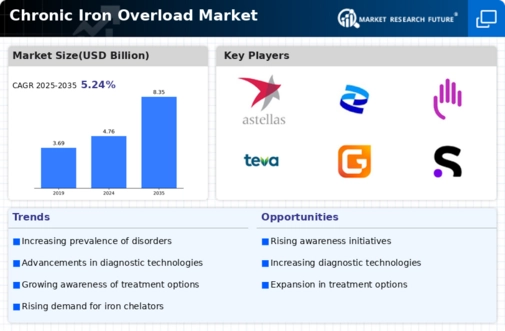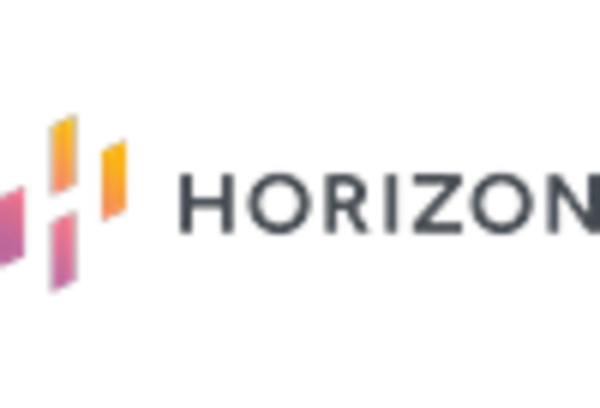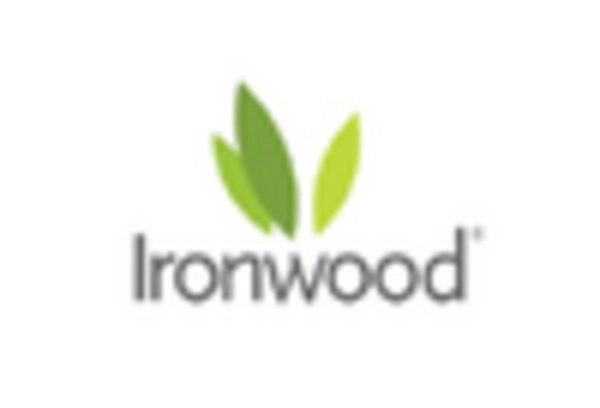Regulatory Support and Guidelines
Regulatory bodies are playing an instrumental role in shaping the Chronic Iron Overload Market through the establishment of supportive guidelines and frameworks. The introduction of clear regulatory pathways for the approval of new therapies encourages pharmaceutical companies to invest in the development of innovative treatments. Recent initiatives aimed at expediting the review process for iron overload therapies have the potential to bring new products to market more swiftly. Additionally, the establishment of treatment guidelines by health authorities promotes standardized care for patients suffering from chronic iron overload. This regulatory support not only enhances patient access to necessary treatments but also fosters a competitive market environment, encouraging the entry of new players and innovative solutions.
Advancements in Diagnostic Technologies
Technological innovations in diagnostic tools are significantly influencing the Chronic Iron Overload Market. Enhanced imaging techniques, such as MRI and liver biopsy, allow for more accurate assessment of iron levels in the body, facilitating timely intervention. The introduction of non-invasive methods for diagnosing iron overload is particularly noteworthy, as it reduces patient discomfort and improves compliance. Market data indicates that the diagnostic segment is expected to witness substantial growth, driven by the increasing adoption of these advanced technologies. Moreover, the integration of artificial intelligence in diagnostic processes may further streamline patient management, leading to improved outcomes. As diagnostic capabilities evolve, the Chronic Iron Overload Market is likely to experience a surge in demand for effective treatment options.
Rising Demand for Personalized Medicine
The shift towards personalized medicine is emerging as a significant driver in the Chronic Iron Overload Market. Tailoring treatment approaches based on individual patient profiles, including genetic predispositions and specific iron overload conditions, is gaining traction. This trend is supported by advancements in genomics and biomarker research, which enable healthcare providers to offer more effective and targeted therapies. Market data suggests that the demand for personalized treatment options is likely to increase, as patients and clinicians seek more effective management strategies for chronic iron overload. Furthermore, the integration of personalized medicine into clinical practice may lead to improved patient outcomes and satisfaction, thereby enhancing the overall market landscape.
Growing Investment in Research and Development
Investment in research and development (R&D) is a crucial driver for the Chronic Iron Overload Market. Pharmaceutical companies and research institutions are increasingly focusing on developing novel therapies aimed at managing chronic iron overload. This trend is evidenced by the rising number of clinical trials targeting iron chelation therapies and other innovative treatment modalities. Market analysis reveals that R&D expenditure in this sector has seen a marked increase, with several new compounds entering the pipeline. The potential for breakthrough therapies not only enhances treatment options but also attracts funding and partnerships, thereby stimulating market growth. As the landscape of chronic iron overload management evolves, the emphasis on R&D is likely to play a vital role in shaping the future of the industry.
Increasing Prevalence of Chronic Iron Overload
The rising incidence of chronic iron overload conditions, such as hereditary hemochromatosis and thalassemia, is a pivotal driver for the Chronic Iron Overload Market. Recent estimates suggest that hereditary hemochromatosis affects approximately 1 in 200 individuals, leading to a growing patient population requiring effective management strategies. This increasing prevalence necessitates the development of innovative therapies and monitoring solutions, thereby propelling market growth. Furthermore, the awareness surrounding iron overload disorders is gradually increasing among healthcare professionals and patients alike, which may contribute to earlier diagnosis and treatment. As a result, the demand for specialized healthcare services and products tailored to chronic iron overload is likely to expand, fostering a more robust market environment.

















Leave a Comment